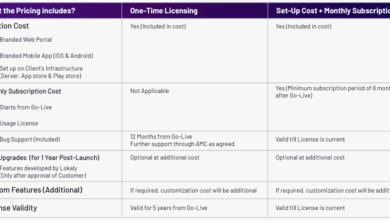
Are world e commerce tariffs inevitable – Are world e-commerce tariffs inevitable? This question probes a complex interplay of global trade dynamics, economic pressures, political motivations, and technological advancements. From historical trade wars to the rise of digital commerce, the forces shaping the future of global trade are immense and multifaceted. This exploration delves into the arguments for and against tariffs, considering the potential winners and losers, the evolving legal landscape, and the future scenarios that could emerge.
The rapid growth of e-commerce has fundamentally reshaped global trade, presenting both opportunities and challenges. Traditional tariff structures, designed for physical goods, are struggling to adapt to the digital marketplace. This creates a fascinating tension between the need for revenue generation, the protection of domestic industries, and the desire for seamless cross-border trade. Examining the historical context, economic drivers, and political pressures surrounding tariffs provides crucial insights into the potential for future conflicts and cooperation in the digital age.
Global Trade Dynamics
The global landscape of trade is a complex tapestry woven from historical precedents, modern agreements, and geopolitical forces. Understanding these threads is crucial to comprehending the potential for future tariffs and their impact on e-commerce. From the ebb and flow of protectionist measures to the rise of global trade blocs, the evolution of tariffs reflects a dynamic interplay of economic interests and political realities.The past century has witnessed a fluctuating relationship with tariffs.
Periods of high protectionism have alternated with periods of greater openness, driven by factors such as economic crises, changing political ideologies, and technological advancements. These shifts have profound implications for international commerce and have consistently shaped the trajectory of e-commerce development.
Historical Overview of Global Trade Tariffs
Global trade tariffs have undergone significant transformations throughout history. Initially, tariffs were often used as a primary source of government revenue and to protect domestic industries. The 1930s saw the imposition of substantial tariffs in many countries, contributing to the Great Depression. Post-World War II, there was a significant shift toward reducing tariffs through multilateral agreements, leading to a period of globalization and increasing trade volumes.
The establishment of the General Agreement on Tariffs and Trade (GATT) and later the World Trade Organization (WTO) played a pivotal role in these developments. However, recent years have seen a resurgence of protectionist sentiment in some parts of the world.
Impact of Trade Agreements on Tariff Policies
Trade agreements, such as the WTO and regional blocs (e.g., EU, NAFTA/USMCA), profoundly influence tariff policies. These agreements typically aim to reduce tariffs among member countries, promoting freer trade and fostering economic interdependence. However, they also create rules and regulations that member countries must adhere to. The WTO, for instance, provides a framework for resolving trade disputes, often related to tariffs.
The success of trade agreements in reducing tariffs is often dependent on the willingness of member countries to comply with the agreements’ provisions. Furthermore, the impact can vary across different sectors and countries, depending on their specific economic circumstances and comparative advantages.
Role of Geopolitical Factors in Shaping Trade Relationships and Potential Tariffs
Geopolitical factors significantly impact trade relationships and the potential for tariffs. Political tensions, national security concerns, and ideological differences can lead to trade disputes and the imposition of tariffs. For example, trade disputes between the United States and China have had significant global repercussions. The role of national security concerns in shaping trade policies is also noteworthy, as countries may impose tariffs on goods deemed essential for national security.
These geopolitical factors can significantly impact the global trade landscape, creating uncertainty and impacting e-commerce.
The question of whether global e-commerce tariffs are inevitable is complex. Recent industry shifts, like CNET’s acquisition of Sumo ( cnet takes over sumo ), might hint at potential future regulations. However, the larger picture of global trade and market forces will ultimately determine if these tariffs become a reality.
Examples of Recent Trade Disputes and Their Consequences
Recent trade disputes between major economies have highlighted the potential consequences of tariff actions. The US-China trade war, characterized by the imposition of tariffs on billions of dollars worth of goods, resulted in disruptions to global supply chains and economic uncertainty. Similar disputes have emerged between other countries, impacting various sectors and consumers. These trade disputes often lead to retaliatory measures, which can spiral into complex and prolonged trade wars.
Comparison of Countries’ Tariff Policies and Trade Practices
The following table provides a snapshot of different countries’ tariff policies and trade practices. Understanding these variations is essential to comprehending the complexities of global trade.
| Country | Tariff Policy (General Approach) | Trade Practices (e.g., Preferential Agreements) | Recent Trade Disputes |
|---|---|---|---|
| United States | Protectionist tendencies, with emphasis on national security concerns. | Participation in various regional and bilateral trade agreements. | Trade disputes with China, EU, and other countries. |
| China | Mixed approach, with varying levels of protectionism across sectors. | Active participation in regional trade agreements, including the Belt and Road Initiative. | Trade disputes with the US, EU, and other countries. |
| European Union | Generally supportive of free trade, but with exceptions for certain sectors. | Extensive network of trade agreements with various countries. | Trade disputes with the US, UK, and other countries. |
Economic Drivers of Tariffs

Tariffs, taxes imposed on imported goods, are a powerful tool in international trade, often used to protect domestic industries. Understanding the economic rationale behind their implementation is crucial to comprehending their potential impact. This section delves into the motivations, arguments, and consequences of tariffs.Economic rationale for tariffs is often multifaceted, rooted in various goals. Governments may employ tariffs to shield domestic industries from foreign competition, encourage domestic production, generate revenue, and even enforce national security interests.
While seemingly simple, the application of tariffs can trigger complex and often unintended consequences.
Economic Rationale Behind Tariffs
Tariffs are often justified based on the premise of protecting domestic industries from unfair competition. This protection is intended to allow domestic producers to compete on a level playing field with foreign competitors, who may have lower labor costs or access to subsidized resources. Tariffs can bolster domestic employment and output by increasing demand for locally produced goods and services.
However, these protective effects are not always straightforward. The imposition of tariffs can also stifle innovation and reduce consumer choice.
Arguments For Tariffs (Economic Perspective)
Proponents of tariffs argue that they can safeguard domestic jobs, industries, and national security. Tariffs can be seen as a tool to encourage domestic production, bolstering local economies and reducing reliance on imports. By increasing the price of foreign goods, tariffs aim to increase demand for domestically produced items.
Arguments Against Tariffs (Economic Perspective)
Critics of tariffs highlight the potential for trade wars, which can disrupt global supply chains and reduce overall economic activity. Increased prices for imported goods can negatively affect consumers, leading to higher costs for everyday products. Tariffs can also discourage international cooperation and lead to retaliatory measures by other countries. Furthermore, the protection of domestic industries may lead to reduced efficiency and innovation.
Impact of Tariffs on Economic Activity
Tariffs can significantly impact consumer prices, producer costs, and overall economic activity. Higher tariffs on imported goods lead to increased prices for consumers, potentially reducing their purchasing power. Producers may face increased costs if their inputs are imported. This can reduce profits and potentially lead to job losses in industries that rely on imported components. The overall economic activity is often affected by reduced trade volumes and investment, as seen in trade wars.
Are global e-commerce tariffs inevitable? It’s a tough question, and the recent acquisition of BabyData.com by OnHealth for $5 million onhealth buys babydata com for 5 million might offer a clue. This kind of deal could be a precursor to future protectionist measures, potentially raising prices and limiting choices for consumers. Ultimately, the answer remains uncertain, but it’s certainly a trend worth watching.
Winners and Losers from Tariff Implementation
The implementation of tariffs often creates winners and losers. Domestic producers, shielded from foreign competition, may benefit from increased market share and higher prices. However, consumers face higher costs for imported goods. Foreign exporters who lose market share are also negatively affected. In a complex global market, the winners and losers are often spread across numerous industries and nations.
Potential Economic Effects of Tariffs on Specific Industries
The effects of tariffs vary considerably across industries, depending on the industry’s reliance on imports, its ability to substitute imported inputs with domestic alternatives, and the availability of domestic substitutes.
| Industry | Potential Effect of Tariffs |
|---|---|
| Automotive | Increased prices for imported components, potential decrease in production due to higher costs, and reduced consumer demand. |
| Textiles | Increased prices for clothing and textiles, potentially stimulating domestic textile production. |
| Electronics | Higher prices for imported electronics, reduced competition, and possible substitution with domestically produced alternatives. |
| Agriculture | Higher food prices, reduced imports, and potential benefits to domestic agricultural producers. |
Political and Social Pressures

The imposition of tariffs is rarely a purely economic decision. Political and social pressures often play a significant role in shaping trade policies, influencing the level and application of tariffs. These pressures stem from a complex interplay of protectionist sentiments, national security concerns, public opinion, lobbying efforts, and the actions of political actors. Understanding these factors is crucial for analyzing the current global trade landscape and predicting future trends.Political motivations for tariffs often extend beyond simple economic gains.
Protectionist sentiments, which advocate for shielding domestic industries from foreign competition, frequently drive the implementation of tariffs. National security concerns can also be a powerful motivator, with tariffs potentially used to reduce reliance on foreign suppliers for critical goods or technologies. Public opinion plays a crucial role in this process, with public support or opposition influencing political decisions regarding trade policy.
Political Motivations for Tariffs
Protectionist sentiments are often fueled by concerns about job losses in domestic industries, particularly in sectors facing intense competition from cheaper imports. National security concerns can arise from a desire to reduce dependence on foreign suppliers for critical goods or technologies, such as semiconductors or pharmaceuticals. Political leaders may use tariffs as tools to achieve these goals, recognizing their potential impact on public opinion.
Public Opinion and Societal Pressures
Public opinion regarding tariffs is often influenced by the perceived impact on jobs, prices, and the overall economy. Concerns about job losses in import-competing sectors often lead to public pressure for protectionist measures. Conversely, consumers may oppose tariffs due to the potential for higher prices and reduced availability of goods. This interplay of public opinion and political pressures significantly shapes trade policies.
While global e-commerce tariffs are a looming threat, the increasing demand for high-speed internet access is shaping the future of tech. Companies like Dell are innovating by offering high-speed internet connectivity with their new PCs, dell offers high speed internet with new pcs potentially altering the landscape of online shopping. This could mean that tariffs become less of a concern as consumers are better equipped to access and navigate global marketplaces.
So, are world e-commerce tariffs truly inevitable? Maybe not.
Role of Lobbying Groups and Special Interests
Lobbying groups and special interests play a significant role in influencing tariff policies. Industry associations, labor unions, and other groups with a vested interest in trade outcomes actively lobby policymakers to advocate for policies that benefit their members. These groups often provide detailed information and analysis to policymakers, aiming to sway their opinions and support their positions on tariffs.
Examples of Political Events Affecting Trade Relations and Tariffs, Are world e commerce tariffs inevitable
The 2018 trade war between the United States and China, sparked by concerns about intellectual property theft and unfair trade practices, is a prime example of how political events can dramatically impact trade relations and tariffs. Political tensions, such as those surrounding national security, can create a climate where tariffs become a tool for achieving political goals. Similarly, trade disputes involving countries with differing political systems or ideological viewpoints can escalate quickly and lead to substantial tariff adjustments.
Contrasting Political Viewpoints on Tariffs
| Political Viewpoint | General Position on Tariffs | Rationale |
|---|---|---|
| Protectionist | Advocates for tariffs to protect domestic industries and jobs. | Believe tariffs safeguard domestic industries from foreign competition and preserve domestic jobs. |
| Free Trade | Generally opposes tariffs, emphasizing the benefits of global trade. | Believes tariffs reduce overall economic efficiency and harm consumers through higher prices. |
| Nationalist | May support tariffs to enhance national security and strategic autonomy. | Focus on reducing reliance on foreign suppliers for critical goods and technologies. |
Technological Advancements and E-commerce: Are World E Commerce Tariffs Inevitable
The rise of e-commerce has irrevocably altered the global trade landscape, challenging traditional notions of tariffs and border controls. This digital revolution has not only expanded market access but also introduced unprecedented complexities for governments seeking to manage international trade. The interplay between technology, consumer behavior, and national regulations will define the future of global trade policy.The explosive growth of e-commerce platforms has blurred the lines between domestic and international transactions.
Goods can be ordered from anywhere in the world and delivered almost instantaneously, leading to a surge in cross-border e-commerce. This shift has significantly impacted the traditional tariff structures, which were often designed for physical goods and slower trade cycles. Existing frameworks struggle to adapt to the speed and scale of digital transactions, raising questions about the efficacy of current policies.
E-commerce’s Impact on Global Trade
E-commerce has profoundly reshaped the dynamics of global trade. It has empowered smaller businesses and consumers to participate in international markets, creating a more competitive and diverse marketplace. The ease of access to global markets has led to an unprecedented level of consumer choice and business opportunities. However, this rapid expansion has also introduced new challenges.
Challenges to Traditional Tariff Structures
The digital nature of e-commerce poses significant challenges to traditional tariff structures. Traditional tariffs, designed for physical goods, often struggle to effectively tax or regulate digital transactions. The intangible nature of digital products, the ease of cross-border movement, and the difficulty in tracking goods across multiple jurisdictions create a complex web of issues.
The Potential Impact of Digitalization on Future Tariff Policies
Digitalization is likely to reshape future tariff policies. Governments will need to develop innovative approaches to taxing and regulating cross-border e-commerce transactions. This may involve the use of digital identifiers, blockchain technology, or advanced data analytics to track and monitor online trade. The focus will likely shift from physical goods to the digital services and intellectual property associated with e-commerce transactions.
Examples include increased use of Value-Added Taxes (VAT) on digital services and potential implementation of digital customs clearances.
Innovative Solutions to Address E-commerce Tariff Complexities
Several innovative solutions are being explored to address the complexities of e-commerce tariffs. These include the development of simplified customs procedures for digital transactions, the use of automated systems for tariff calculations, and the implementation of digital trade agreements that address the unique challenges of e-commerce. Furthermore, the use of technology to track and monitor goods throughout the supply chain can enhance transparency and facilitate more effective enforcement of regulations.
Evolving Role of Technology in Global Trade and Tariffs
| Aspect | Description | Impact on Tariffs |
|---|---|---|
| Digitalization of Trade | Increased cross-border e-commerce, intangible goods, and services. | Traditional tariffs struggle to capture the value of digital transactions. |
| Data Analytics | Tracking and monitoring online trade, identifying patterns, and streamlining customs processes. | Allows for more efficient and targeted tariff policies. |
| Blockchain Technology | Secure and transparent tracking of goods, provenance verification, and anti-counterfeiting measures. | Facilitates trust and efficiency in international trade, potentially reducing fraud. |
| Artificial Intelligence | Automated customs procedures, risk assessment, and fraud detection. | Streamlines customs processes and enhances enforcement, improving efficiency and effectiveness. |
Legal and Regulatory Frameworks
International trade, particularly e-commerce, relies heavily on established legal frameworks to govern transactions and ensure fair practices. These frameworks, while aiming for global harmony, often face challenges in adapting to the rapid pace of technological advancements. Understanding the legal basis for tariffs, the role of dispute resolution, and the ongoing evolution of the legal landscape surrounding e-commerce tariffs is crucial for navigating this complex terrain.The legal basis for imposing tariffs is rooted in national sovereignty and the right of governments to regulate international trade.
This right is often exercised within the context of international trade agreements, such as the WTO agreements. These agreements, while aiming to reduce trade barriers, allow for tariffs under specific conditions, such as national security concerns or anti-dumping measures. However, the application of these provisions is subject to rigorous scrutiny and dispute resolution mechanisms.
Legal Basis for Tariffs
International trade agreements, like the WTO’s Agreement on the Implementation of Article VI of the General Agreement on Tariffs and Trade (GATT), provide a framework for tariffs. These agreements Artikel exceptions to the general principle of reducing tariffs, allowing countries to impose tariffs under certain conditions, such as to prevent dumping or protect domestic industries. The specific legal provisions defining these conditions vary across agreements and are often subject to interpretation and negotiation.
Furthermore, national security concerns can also justify tariff imposition, though this is a complex and contentious issue, with international bodies scrutinizing such justifications to prevent misuse.
Dispute Resolution Mechanisms
The WTO’s Dispute Settlement Body (DSB) plays a critical role in resolving trade disputes, including those related to tariffs. The DSB provides a structured process for countries to challenge tariff actions, ensuring adherence to international trade rules. This mechanism is crucial for maintaining a stable and predictable international trading environment. However, the effectiveness of the DSB can be influenced by political considerations and the potential for protracted negotiations.
Examples of Legal Challenges to Tariff Policies
Numerous legal challenges to tariff policies have been brought before international trade bodies. These challenges often arise when countries feel that tariffs imposed by another country violate international trade agreements. Examples include disputes related to anti-dumping duties, safeguards, and national security exceptions. Successful challenges can lead to the modification or removal of tariffs, highlighting the importance of adhering to international trade rules.
Legal Precedents Related to Tariffs and E-commerce
The application of existing tariff laws to e-commerce presents unique challenges. Existing legal precedents related to tariffs in traditional trade may not fully address the specific characteristics of e-commerce transactions, such as the digital nature of goods and services. This necessitates a careful consideration of how existing laws apply and the need for potential amendments or new regulations to adapt to the digital economy.
Key Legal and Regulatory Considerations for E-commerce Tariffs
| Category | Description |
|---|---|
| Tariff Classification | Accurate classification of goods for tariff purposes is critical in e-commerce, as digital products and services may not have clear counterparts in traditional tariff schedules. |
| Origin Rules | Determining the origin of digital goods and services can be challenging, impacting the application of preferential tariff rates. |
| Valuation Methods | Appropriate valuation methods for e-commerce transactions need to be established to ensure fair and equitable application of tariffs. |
| Customs Procedures | Streamlined and efficient customs procedures are necessary for managing the influx of e-commerce goods and services. |
| Data Privacy and Security | Protecting sensitive data associated with e-commerce transactions is paramount, requiring international cooperation and robust regulatory frameworks. |
Future Scenarios and Predictions
The future of global e-commerce tariffs is uncertain, but several potential scenarios can be envisioned, each with distinct economic and political underpinnings. Understanding these scenarios is crucial for businesses and consumers to anticipate and prepare for potential changes in cross-border trade. These scenarios will likely be influenced by the interplay of economic growth, geopolitical tensions, and technological advancements.The potential implications of these future scenarios for businesses and consumers are multifaceted.
Businesses operating in the e-commerce sector need to be prepared for fluctuating trade policies and associated costs. Consumers, in turn, might face increased prices for imported goods or limited product availability, depending on the specific tariff regime.
Potential Scenarios for Global E-commerce Tariffs
The global landscape is dynamic and complex, leading to a multitude of potential scenarios regarding e-commerce tariffs. These scenarios are driven by evolving political and economic factors.
- Scenario 1: Increased Protectionism: This scenario involves a rise in protectionist measures by governments, potentially due to concerns about national security, domestic job losses, or unfair competition. Governments might impose higher tariffs on imported goods, including those from e-commerce platforms. An example of this is the recent increase in tariffs on certain electronics imports. This scenario could result in higher prices for consumers and reduced choice.
- Scenario 2: Regional Trade Agreements: International cooperation and the strengthening of regional trade agreements, such as the EU’s single market, could lead to reduced tariffs among participating countries. This could benefit e-commerce businesses operating within these regions. The CPTPP (Comprehensive and Progressive Agreement for Trans-Pacific Partnership) is an example of a regional trade agreement that seeks to reduce trade barriers.
- Scenario 3: Digital Services Taxes (DSTs): Governments might implement DSTs targeting e-commerce companies to generate revenue or address perceived tax avoidance. This could involve imposing taxes on digital transactions or online sales. This scenario could increase the cost of doing business for e-commerce companies. The implementation of a digital services tax in several countries demonstrates the potential for this scenario.
- Scenario 4: E-commerce-Specific Tariffs: Governments might introduce tariffs specifically targeted at e-commerce transactions, potentially due to concerns about the unique nature of this form of trade. This could involve additional duties on cross-border online sales. This scenario is still largely theoretical, but the potential for such a development exists.
Impact on Businesses and Consumers
The implementation of these tariff scenarios will have direct impacts on businesses and consumers.
| Scenario | Impact on Businesses | Impact on Consumers |
|---|---|---|
| Increased Protectionism | Higher operational costs, reduced market access, potential supply chain disruptions. | Increased prices, reduced product availability, potentially less choice. |
| Regional Trade Agreements | Reduced tariffs, increased market access, streamlined logistics. | Lower prices, increased choice, greater convenience. |
| Digital Services Taxes | Increased operational costs, need for compliance with new regulations. | Potentially higher prices for online goods and services. |
| E-commerce-Specific Tariffs | Increased compliance costs, complexity in pricing and logistics. | Potentially higher prices for imported goods from e-commerce platforms. |
Role of International Cooperation
International cooperation plays a critical role in mitigating potential trade conflicts. Multilateral agreements and dialogue between governments can help to establish common standards and resolve disputes related to e-commerce tariffs. The World Trade Organization (WTO) can facilitate such cooperation.
Final Conclusion
In conclusion, the inevitability of e-commerce tariffs hinges on a delicate balance of global trade pressures. While the current landscape suggests a complex future, the potential for both conflict and cooperation remains high. The interplay of economic, political, and technological factors will undoubtedly shape the trajectory of e-commerce tariffs in the years to come. Understanding the multifaceted nature of this issue is crucial for navigating the complexities of global trade in the digital age.






